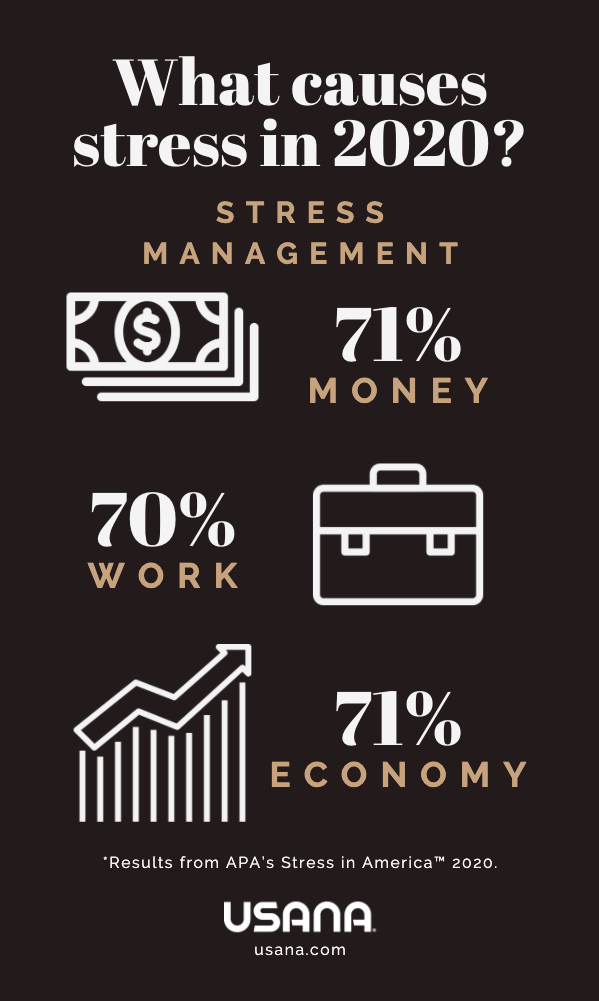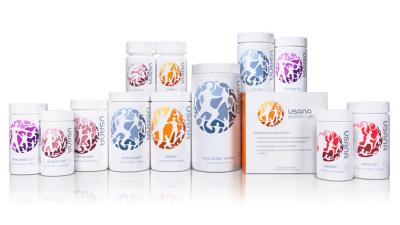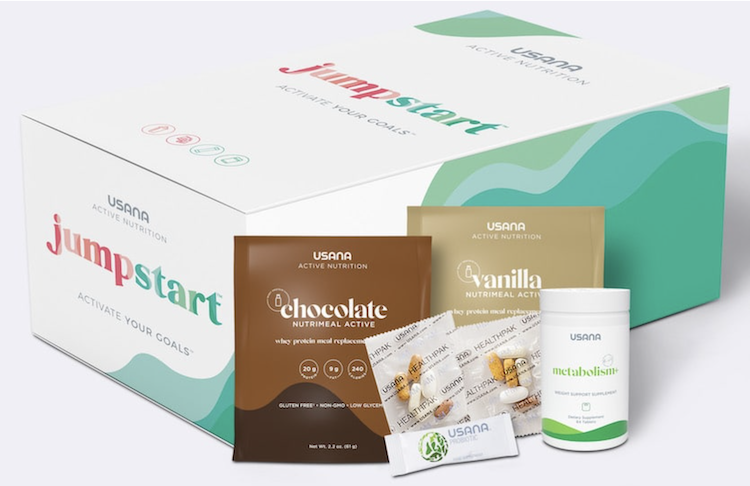It’s all too common to feel stress at times—it’s an instinctive response to the environment around you. Stress looks different for everyone, regardless of age, gender, or circumstance. When stressed, you may feel overwhelmed, worried, run-down, or experience physical symptoms such as aches and lightheadedness.
Although stress levels are on the rise for middle-aged and young adults, the good news is younger people are openly seeking therapy and treatment to better manage their stress. Thankfully, there are countless resources available. Read on to learn what stress is, its causes, how your body responds to it, and ways to master stress management.
WHAT IS STRESS?
“Stress can be defined as the degree to which you feel overwhelmed or unable to cope as a result of pressures that are unmanageable.” – UK Mental Health Foundation
Stress is a state of mental or emotional strain or tension resulting from adverse or demanding circumstances. Typically, it’s triggered by something that causes strong feelings of worry or anxiety. Not all stress is bad, though.
GOOD STRESS (EUSTRESS) VS BAD STRESS (DISTRESS)
Eustress is “good” stress. It’s an extra physiological incentive to keep you motivated and get the job done. People typically need some level of stress to work and improve their lives. Eustress keeps us happy, motivated, challenged, and productive.
Take anticipation, for example. Preparing for a job interview, a date, or waiting for test results can all cause short-term stress. A little stress can be a good thing when it adds an extra bit of pressure to perform.
Distress, also known as “bad” stress, is the tipping point where the stress felt during eustress is no longer helpful or productive. It’s when the good stress becomes difficult to handle and tension begins to rise. You may feel a certain challenge is no longer fun, or that there is no end in sight. Various life events can cause long-term, or chronic stress.
ACUTE VS. CHRONIC STRESS MANAGEMENT
Acute stress doesn’t last long. It’s caused by the fight-or-flight response, which prepares the body to either fight or run away from a perceived threat. When this response is activated, chemicals like adrenaline, noradrenaline, and cortisol are released into your bloodstream. And if your stress is caused by something you can’t physically run away from, you may over-react or experience feelings of agitation and aggression.
Chronic stress often lasts 30 days or more. Acute stressors can add up to chronic stress if situations are poorly managed or ignored. Traumatic events can also cause chronic stress, which may result in depression or anxiety. Consult your mental health provider if you begin feeling symptoms of PTSD or other mental illnesses.
BOTH TYPES OF STRESS CAN AFFECT YOUR PHYSICAL HEALTH
Untreated, chronic stress can cause serious health problems. It can contribute to anxiety, muscle pain, high blood pressure, and a weakened immune system. Acute stress can cause increased blood pressure, rapid breathing, and overall muscle tension.
WHAT CAUSES STRESS?

There are many reasons you might feel overwhelmed—and just as many stress management solutions for relief from those stresses.
Common causes of stress in the U.S. are money, work, and the economy. Another 2020 study shows 83 percent of Americans—an all-time high—consider the future of the nation “a significant source of stress.” People can also experience stress surrounding their health, emotional problems, major life changes, family, and conflicts with beliefs and values. Other common causes are environmental factors, such as social situation, jobs, unemployment, or living in an area with crime or pollution.
CIRCLES OF INFLUENCE AND CONCERN
When identifying causes of stress, it can help to be familiar with the circles of influence and concern. This diagram created by Stephen Covey details what you can and can’t change.
The circle of influence is the area where you have some sort of control. It includes things like being prepared, exercising, or interacting with others. In the circle of concern, you have far less control, like what others think of you, what could happen, and the weather. A proactive focus on the areas within your Circle of Influence allows you to direct your energy to what you have control over and where you can make positive life changes in your life.
FIND THE SOURCE AND MASTER STRESS MANAGEMENT
To truly know what triggers stress, you need to identify the source. Some stressors happen to us, and others are self-inflicted. This is internal vs. external stress. Internal stressors are self-induced anxiety or worries, and external stress is caused by experiences we encounter.
Internal sources of stress include fears, uncertainty, a lack of control, attitudes, opinions, or expectations. External sources can be major life changes such as marriage, buying a new home, unpredictable events, your workplace, and meeting new people.
THE NUTRITION AND STRESS CONNECTION
Nutrition can also influence how you feel. Consider caffeine as an example. Consuming high quantities of it can increase your heart rate, blood pressure, and blood flow—all symptoms of physical response to stress.
Balancing the right nutrients in your diet, while reducing your intake of alcohol, caffeine, sugar, and salt can help keep you in a calmer headspace. According to the Physicians Committee for Responsible Medicine, this, along with a low-fat, high-fiber, carbohydrate-rich diet including plenty of fruits and vegetables, will help soothe you without taking away energy.
THE BODY’S STRESS RESPONSE
THERE ARE TWO DIFFERENT TYPES OF STRESS RESPONSE: PHYSICAL AND EMOTIONAL.
Potential physical responses include increased blood pressure or heart rate, faster breathing, and overall tension throughout the body. Individuals may also experience headaches or muscle aches.
Emotionally, stress can lead to feelings of anxiety, depression, doubt, or fear. According to Varvogli and Darviri, stress fuels approximately 50 percent of depression cases. Additionally, some individuals cope by relying on unhealthy habits, such as overeating.
WAYS TO COMBAT STRESS
Coping is the method you use to resolve perceived threats. It’s important to keep in mind what may work as a solution for one person may not work for you. Each individual perceives situations and stress management differently.
Time out. Engage in an activity to clear your head—anything from a massage, reading a book, practicing yoga (see below), or listening to your favorite music.
Accept what you can’t control. There’s no point in worrying about things you have no control over. When you feel stressed, change your perspective. Is there anything you can learn from the experience? Is there anything you can do differently when confronted with this stressor in the future? Try to understand what situations make you experience the most stress, and find a positive way to work around them.
Talk to someone you trust. It’s important to have close family members or friends you can speak openly with and trust during times of difficulty or stress. Confide in your inner circle, ask for their advice, and let them know how they can help you. Speaking with someone else is a good way to see a different perspective to help you figure out new ways to cope.
Eat nutritious and balanced meals. Savor deliciously healthy meals and smart snacks. Easy, healthy treats include apple slices, almonds, string cheese, and garnished celery sticks. Eating regularly throughout the day keeps your energy levels stable, so you may be less likely to feel a slump—or an increase of nervous energy.
Limit stimulants. Alcohol, a depressant, and caffeine, a stimulant, can increase stress and anxiety levels, so sip in moderation.
Work it out. A daily exercise routine is a great way to master stress management. Regular exercise releases endorphins to help you feel better while you maintain overall health.
Sleep well, and often. It’s recommended adults get seven to nine hours of sleep per night. Sleeping helps you feel refreshed and prepared for the day ahead. And this includes weekends—maintaining a consistent sleep schedule is paramount to support your circadian rhythm.
Become a yogi. Yoga is a great tool for stress management—it’s all about the mind and body connection. Physical postures and breathing techniques improve muscle strength, flexibility, blood circulation, and oxygen intake. One study found “the relaxation induced by meditation helps to stabilize the autonomic nervous system…Physiological benefits which follow help yoga practitioners become more resilient to stressful conditions and reduce a variety of important risk factors for various diseases, especially cardio-respiratory diseases.”
Make the time. Learning to better manage your time can help with day-to-day acute stress, especially if you find yourself repeatedly scrambling to get things done or meet deadlines. Create daily, weekly, or even monthly to-do lists, and keep your calendar updated—either digital or analog—whichever works best for you. Start by tackling the tasks that require the most work. As you check off the biggest part of your list, the rest of the to-dos are easier to complete.
The POMODORO technique challenges you to work uninterrupted on a task for 25 minutes, and then take a five-minute break. It’s a great way to keep yourself motivated and focused.
Inhale, exhale. Also known as ‘diaphragmatic breathing,’ it’s a common practice in yoga. Focus on your breath—breathe in for five seconds, then exhale for five seconds. When taking deep breaths, you should notice an expansion of the abdomen rather than your chest.
Try muscle relaxation. Progressive muscle relaxation (PMR) is a stress management technique where you alternate tensing and relaxing different muscles. The theory behind it is simple: since stress causes muscle tension, it’s possible to reduce stress by learning how to relax certain muscles. The best way to practice PMR is to lay on a comfortable surface, close your eyes, and be guided through the technique. One study found that long-term benefits of PMR include reduction of generalized anxiety, decreased blood pressure and heart rate, and decreased headaches.
Find your Zen. Meditation is greatly beneficial to mental and physical health and can be practiced anywhere, for any amount of time. One type of meditation commonly used as a stress management technique is called Transcendental Meditation. It’s recommended you practice for 20 minutes, two times a day. And it’s simple to do—sit with your eyes closed and repeat a mantra of your choice.
Practice resilience. According to the American Psychology Academy, resilience is the process of adapting in the face of adversity, trauma, tragedy, threats, or significant sources of stress—such as family or relationship problems, health complications, or issues in the workplace. Resilience involves behaviors, thoughts, and actions. It can be taught or practiced by anyone. Being resilient can help you make realistic plans, solve problems, manage strong feelings, maintain a positive view of yourself and others, and take steps to solve problems.
Practicing resilience helps you cope smarter and better. Ways to build and practice resilience include accepting change as a part of life, taking decisive action, maintaining a hopeful outlook, taking care of yourself, positive self-talk, connecting with others, and always moving toward realistic goals.
A RELAXING RECAP
There’s a great deal of information here, so here’s a short recap.
There is good stress and bad stress in life, and having both is imperative to growth.
Acute stress includes everyday actions, like waiting for a phone call, giving a presentation, or going to an interview. Chronic stress can be the result of an acute stress handled poorly.
Both have physical and mental health implications. But luckily, there are ways to fight stress.
STRESS MANAGEMENT INFOGRAPHIC
Download and share this infographic featuring seven tips for stress management.

 Español
Español












